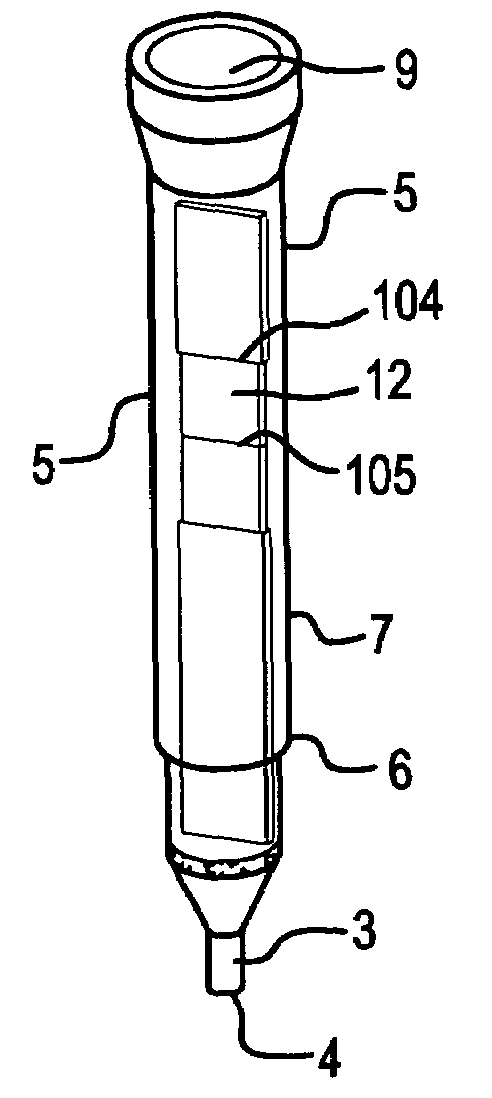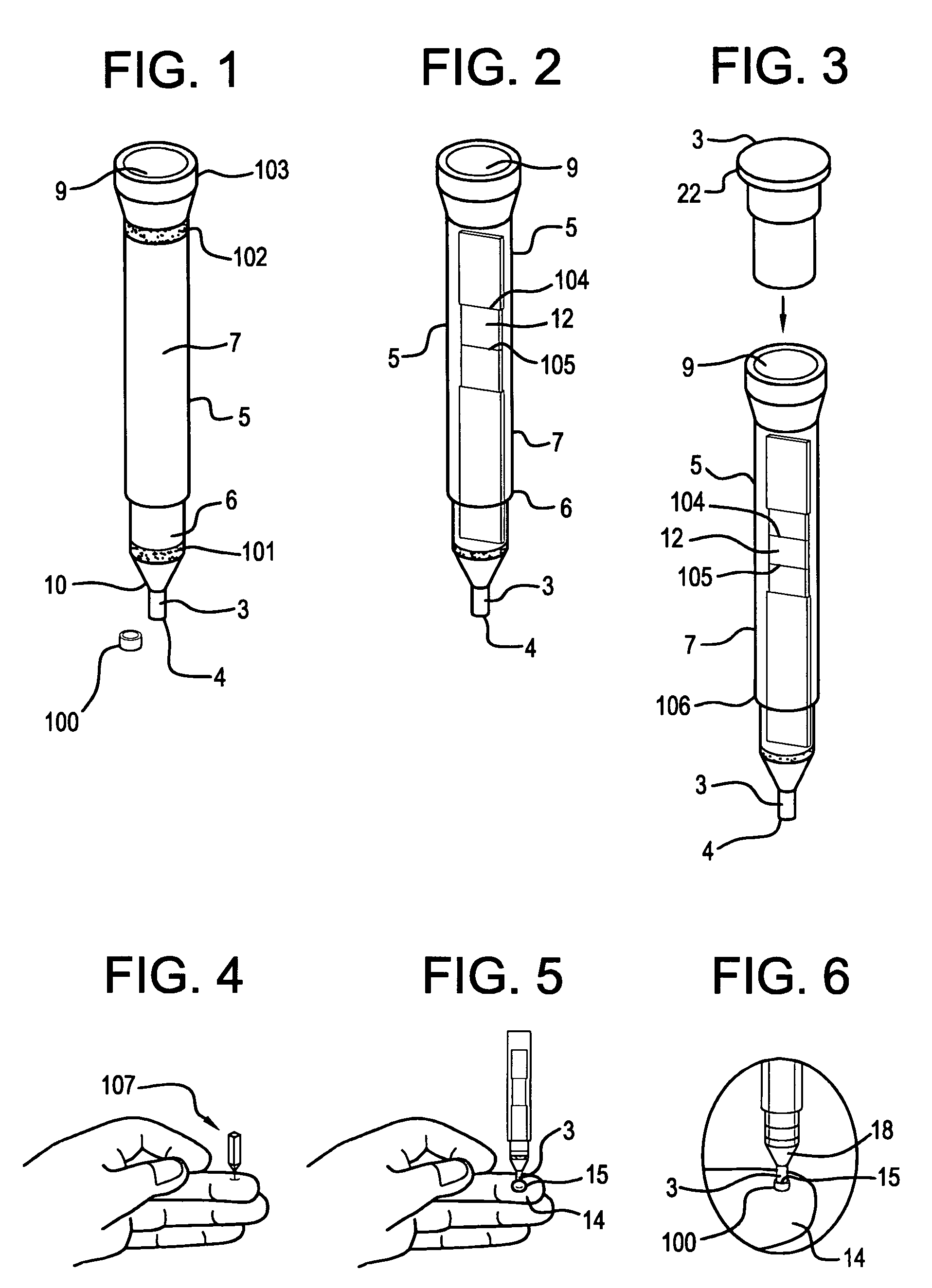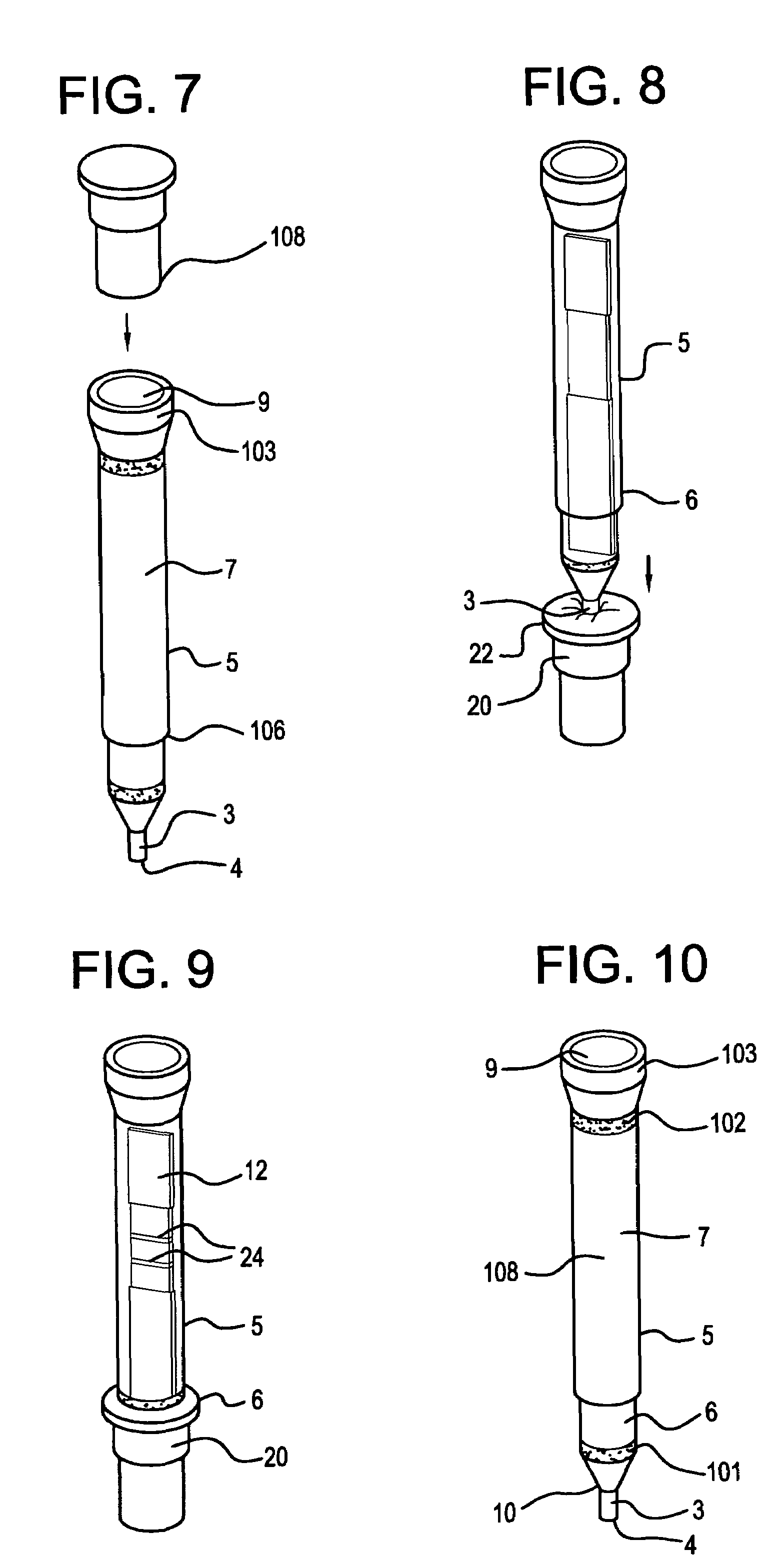Specimen collecting, processing and analytical assembly
a technology for analyzing assemblies and specimens, applied in the field of sampling, processing and analytical assemblies, can solve the problems of unopposed smooth muscle contraction and vessel spasm, and the speed of sample extraction by means of unassisted diffusion is quite slow, and the effect of several minutes
- Summary
- Abstract
- Description
- Claims
- Application Information
AI Technical Summary
Benefits of technology
Problems solved by technology
Method used
Image
Examples
Embodiment Construction
[0043]Referring to FIG. 1, a barrel container 5 is provided with a capillary tube 3 having an open capillary end 4, and an open top 9 with a chamber 7 disposed there between. Variations in the shape of the barrel container 5, the position of the open top 9, as well as the size and shape of capillary tube 3 may exist depending upon the particular liquid specimens to be analyzed. For example, for the collection of a small volume of about 1 to 5 μl, a capillary tube 3 having a short length of about 3 to 5 mm, a narrow diameter of about 0.1 2.0 mm,with a small capillary opening 4 is advantageous. However, for the collection of larger volumes of about 6 to 100 μl of a fluid, a capillary tube 3 with a longer length 3 of about 0.5 to 20 mm, a diameter of about 1 to 5 mm, a funnel shaped opening as described in the U.S. Pat. No. 5,935,864, is preferred. The dimensions and design of the capillary tube would be adapted to hold volumes of 100 μl to 2000 μl. The capillary tube portion 3 may be ...
PUM
| Property | Measurement | Unit |
|---|---|---|
| interior volume | aaaaa | aaaaa |
| length | aaaaa | aaaaa |
| length | aaaaa | aaaaa |
Abstract
Description
Claims
Application Information
 Login to View More
Login to View More - R&D
- Intellectual Property
- Life Sciences
- Materials
- Tech Scout
- Unparalleled Data Quality
- Higher Quality Content
- 60% Fewer Hallucinations
Browse by: Latest US Patents, China's latest patents, Technical Efficacy Thesaurus, Application Domain, Technology Topic, Popular Technical Reports.
© 2025 PatSnap. All rights reserved.Legal|Privacy policy|Modern Slavery Act Transparency Statement|Sitemap|About US| Contact US: help@patsnap.com



